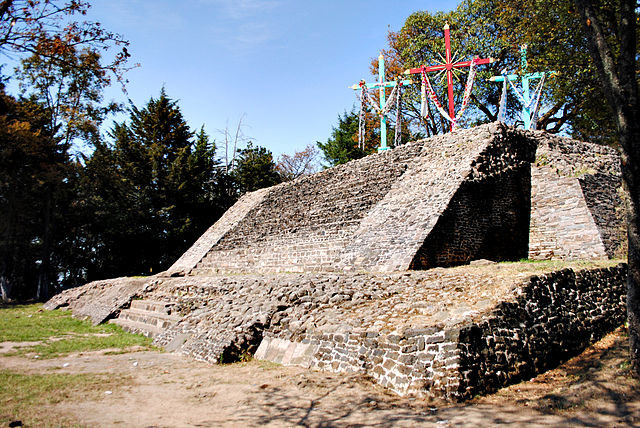
The peak of the Cerro del Judío is Mazatepetl, a reconstructed pyramid, and some of the oldest archaeological excavations in the entire Valley of Mexico. The site dates to between 1200 and 1380 and is unique in what are clearly Otomi cultural artifacts and finds.
The Cerro del Judío, sometimes referred to as the “Hill of the Three Crosses,” is Mazatepetl’s Christianized name. “Hill of the Deer” is the meaning of the name, “Mazatepetl,” in Náhuatl.
The top of the hill, at 2,750 meters above sea level, is an Otomi archaeological settlement. The site includes a pyramid dating from ca. 1200 C.E. It features a staircase and turtle and jaguar claws, and related to the fertility of the surrounding farmland. Ehecatl, the Aztec god of wind, is also known to have been celebrated here.
The site also includes a ceremonial center with artifacts dating from between 1200 and 1380 C.E. The builders of the site are likely to have been Tepanecan groups who occupied the area during the later Triple Alliance.
During Holy Week, the local faithful gather for the Christian holidays, and Saint Barnabas is also celebrated, as he is the patron saint of the town San Bernabé Ocotepec just down the southern face of the hill.
Today a Protected Natural Area, The Centro Ecoturístico Cerro Mazatepetl is served by guided tours, classes, and workshops in alternative medicine. It’s also well regarded for the outstanding views of the city to the north, as well as for the variety of outdoor and nature-related activities that can be enjoyed here.

Nearest at 0.94 kms.

Nearest at 1.00 kms.
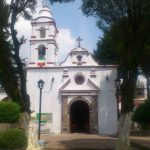
Nearest at 1.09 kms.
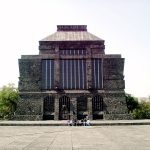
Initially intended as but one part of a City of the Arts, today's Anahuacalli Museum is a far more contemporary space than you might imagine.

One of the most important sites in the city, even today, don't miss the chance to visit the Templo Mayor.
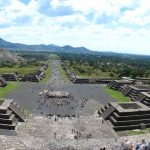
An essential stop for first-time visitors to Mexico City.
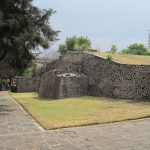
One of the city's newest archaeological sites, it's one of the oldest and deepest of shrines in the Valley.
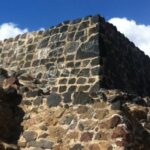
One of the oldest and most significant archaeological zones in Mexico City.